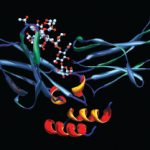“What we don’t know here, and what’s been a problem in this literature, has been what is the background rate of lymphoma and cancer in children,” he said. “There are some studies that say there is no increase in children. The more recent studies, and I think the weight of the evidence, suggest that JIA behaves just like RA, and that inflammation drives risk of cancer.”
When asked about the black-box warning and told by an audience member that, patients with cancer will not want to take an anti-TNF drug despite little evidence that the risk is real, Dr. Cush said, “I’m not aware of black-box warnings that go away very easily or very quickly … A lot has happened in the last 10 years. You can either focus on the black box, or focus on the research.”
Discussing Tofacitinib
Larissa Lapteva, MD, clinical team leader from the FDA’s Division of Pulmonary, Allergy, and Rheumatology Products, gave an overview of the effectiveness and safety of the janus kinase inhibitor tofacitinib (Xeljanz), approved in November as the first new oral DMARD in more than a decade.
Although the drug showed effectiveness in reducing disease activity, its effects on radiographic progression were less clear. According to the manufacturer’s data, the effect was statistically significant in this regard, but when the FDA performed several sensitivity analyses including removal of an outlier from the calculation, the results fell short of significance.
“There is a high proportion of nonprogressors in the placebo arm, which makes it difficult to demonstrate the difference between the treatment groups, and that’s one inherent limitation of this study,” Dr. Lapteva said. She added that, “the product may have some effect on radiographic progression; however, based on the current data, uncertainty still remains with this conclusion.”
Safety data show there were seven lymphoproliferative disorders in the drug development program’s tofacitinib groups, while there were none in the placebo groups—a finding that dovetails with concerns of lymphoma occurrences seen in nonclinical studies with monkeys and in the drug’s renal allograft program.
“While this evidence does not prove the attribution of increased risk of lymphoma with tofacitinib exposure, it once again points to the immunosuppressive effects of this drug.”
The exposure-adjusted incidence rates of solid and hematologic malignancies were numerically higher in tofacitinib’s 10-mg groups compared to the 5-mg groups, while no malignancies occurred in the placebo groups in Phase III trials.

